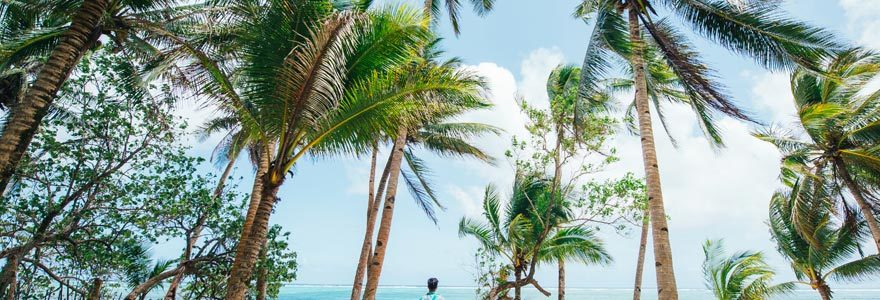If you're Dominican Republic travel for the first time, knowing a bit about the culture and traditions can give you the confidence to go out and meet the people, find your way around, eat from the menu, explore and bargain. You can visit godominicanrepublic.com to learn and have a fantastic experience in the Dominican.
Here are some tips to help you plan your travel in Dominican Republic, including activities, lodging alternatives, the best methods to move around, and the best time to visit.
Where to Stay
Regardless of where you stay, this country has the most variety and vast accommodation options in the Caribbean. Numerous accommodations are available to meet varying tastes and budgets.
For instance, all-inclusive resorts offer most beach vacation accommodations along with the coast's busiest parts, particularly in the south-eastern half of the country and on the beautiful beaches of Bavaro and Punta Cana.
Families go to amusement parks and water parks, while honeymooners and couples flock to romantic private locations. This neighbourhood also has several golf courses and several premium restaurants and spas.
Families on a tight budget should look at the slightly less expensive resorts and beach hotels in Juan Dolio, where they'll also find amusement parks and services. On the other end of the spectrum, La Romana's luxurious villas attract celebrities and the ultra-rich.
What to Eat and Drink
The Dominican diet is mainly carbohydrate-based, ranging from potatoes and rice to cassava, plantains and yucca. When you travel to The Dominican Republic, sample popular foods such as la Bandera Dominicana (white rice, meat, salad and stewed beans), sancocho and mofongo.
Additionally, meals that highlight the country's varied populace are worth eating, ranging from Nios Envueltos (a spicy Middle Eastern cabbage roll variant) and Chambre (a one-pot bean-and-meat stew that enslaved Africans brought across) to Chofa (a rice dish with Dominican-Chinese elements) and Tipili (a bulgur salad popularised by Palestinian, Lebanese, and Syrian immigrants).
What to Do
The Dominican Republic tourism offers comprehensive activities, from extreme outdoor excursions to cultural encounters. You can visit Santo Domingo's Colonial City and see its 16th-century landmarks and museums. For Victorian architecture, take a stroll around the city centre of Puerto Plata.
You will be surrounded by natural beauty wherever you stay. In Jarabacoa, hike through mountains and national parks and look at the waterfalls.
Also, explore the country's thirty miles of coastline, from Punta Cana to the rough beaches of the Samana Peninsula, the outlying islands of Saona and Catalina, and Puerto Plata's golden shoreline.
How to Get Around
If you want to fly to the Dominican Republic, you can get direct flights to Santo Domingo's Las Américas International Airport from Newark, Boston, New York, and Miami. There is also continuous service to Punta Cana International, the busiest airport, from Atlanta, Boston, Baltimore, Chicago, Philadelphia, Pittsburgh, Washington D.C and New York.
It costs about $40 to go from Las Américas International Airport downtown Santo Domingo's Zona Colonial. Taxis in the Zona do not roam about searching for passengers. Instead, they cluster at crossroads along the pedestrianised El Conde and in densely crowded areas such as Parque Colón. Taxis are unmetered, meaning you have to negotiate the fee ahead of time.
Uber is less expensive and runs in Puerto Plata and Santo Domingo. Areas like The Puerta Plata, , Santo Domingo, Santo Domingo, Punta Cana airports, La Romana, and Santiago have major car hire companies.
Caribe Tours and Metro Tours provide long-distance excursions in luxurious, air-conditioned buses between major cities. Espresso Bavaro is the sole bus that connects Santo Domingo with Punta Cana. All three provide daily service on a regular schedule.
The Best Time to Visit
Dominicans can tell you that the island is constantly in summer, but they mean that it may be warm and sunny. There are no distinct seasons, and temperatures do not change considerably from month to month. Even during the rainy season, which varies by location, it doesn't always rain every day—sometimes, it's only a sudden, heavy deluge for about an hour.
Santo Domingo is mostly sunny, with the greatest rain and the highest temperatures falling between May and October. The same can be said for Punta Cana, though rainfall isn't as plentiful. La Romana, which is just near Punta Cana, has high temperatures all year—August is the warmest month, January is the coldest, March is the driest, and October is the wettest.
The climate in the Samaná Peninsula is tropical rainy with no distinct dry season, yet it still receives six to eight hours of sunlight each day; humidity is low in March and most significant in September. On the island, hotel costs are low from August to December, and highest the week before Easter and from July to August.
